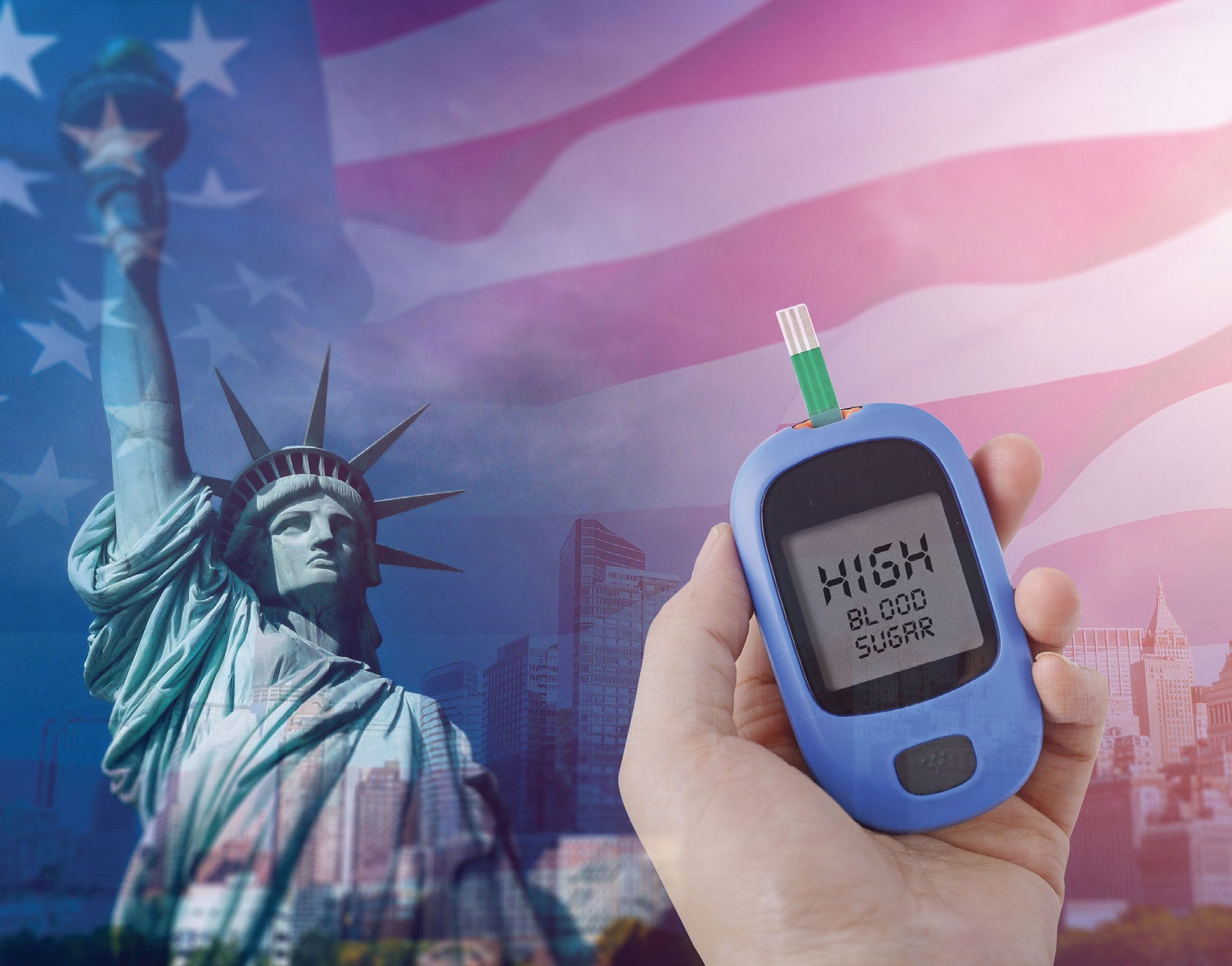1-866-405-5138 (U.S.) 🇺🇸 or
1-925-331-6892 (Non-U.S.)

In recent years, there has been growing concern amongst the medical and health communities in regard to Americans’ blood sugar health. Many people may have a perception in their mind that diabetes is the binary consequence of blood sugar issues — either you have it or you don’t. However, as you’ll learn in this article, blood sugar health is more like a continuum, with a shocking amount of Americans finding themselves on the wrong end of it.
So what is “insulin resistance”? Who is it affecting? How can you protect your own blood sugar health in the face of what’s truly an American epidemic? Let’s talk about it.
What is Insulin Resistance and Why Does It Matter?
At its simplest, insulin resistance is when the body’s cells become resistant to insulin. Obvious, sure, but the ramifications are incredibly serious due to just how important insulin’s function in the body actually is.
Insulin is a hormone that plays a crucial role in regulating blood sugar levels. Normally, when you eat a meal, the pancreas releases insulin to help the glucose in that food enter body cells, where it can be used as energy or stored for later use. However, when somebody is insulin resistant due to their body releasing insulin too often, the cells in the body no longer respond as effectively to the hormone. Suddenly, the sugar in the bloodstream isn’t being absorbed, signaling the pancreas to release even more insulin, and a vicious cycle is underway.
While the primary risk of insulin resistance is the development of type 2 diabetes, there are many other health issues that can result from the imbalance of insulin and blood sugar. Cardiovascular disease, high blood pressure, high cholesterol and obesity are all more likely to happen when somebody is insulin resistant. This is bad news, of course, but the worst part is just how common insulin resistance has become.

3 Ways Insulin Resistance Leads to Weight Gain
An American Epidemic: The Urgency of "1 in 3"
 So, who does insulin resistance really affect? The answer is quite sobering, and shows that this condition is anything but rare. The Centers for Disease Control keeps a toll on how many Americans have prediabetes, meaning they have higher blood sugar levels than normal. This goes hand in hand with insulin resistance since, as we just learned, these heightened blood sugar levels are indicative of cells’ inability to respond to insulin.
So, who does insulin resistance really affect? The answer is quite sobering, and shows that this condition is anything but rare. The Centers for Disease Control keeps a toll on how many Americans have prediabetes, meaning they have higher blood sugar levels than normal. This goes hand in hand with insulin resistance since, as we just learned, these heightened blood sugar levels are indicative of cells’ inability to respond to insulin.
Now, the numbers. According to the CDC, 96 million American adults are pre-diabetic. That’s more than 1 in every 3. What’s more, 8 in 10 of these individuals don’t even know that they are pre-diabetic. With insulin resistance being this prevalent, and flying this far under the radar, how is somebody even supposed to keep tabs on their own health and live a lifestyle that can help protect them?
The Best Defense Against Insulin Resistance
As with many things, knowledge is power here. Insulin resistance doesn’t present itself in an obvious way, but, fortunately, it’s not difficult to get a read on your blood sugar health with a simple visit to your healthcare provider. There’s a number of signs they may look for, some of which you may be able to notice yourself as a signal to get to the doctor:
Some signs of insulin resistance are:
Again, the most important thing to remember here is that your doctor is the person you want to talk to about blood sugar health. That being said, the CDC provides guidelines on how to improve insulin sensitivity to help you stay healthy. No, they’re not the most fun lifestyle changes to make, but they’re incredibly beneficial for all areas of wellness:
Look at it this way: these are cornerstones of a healthy lifestyle you’ve probably heard a thousand times. But, with the issue of insulin resistance coming into focus, there’s one more very worthwhile reason to implement these sorts of changes in your own life.
Seeing a third of all people in the United States on a dangerous path with their blood sugar is certainly alarming. At the same time, the fact that 80% of those people aren’t even aware of the problem speaks to the fact that greater knowledge of the issue can go a long way toward resolving it.
Check with your doctor to get a read on your own sugar situation and, while it may be a chore at first, integrate healthy exercise, eating, and sleep habits to protect your health.
Yours in continued good health,
The Best Life Herbals Wellness Team
The statements contained herein have not been evaluated by the US Food and Drug Administration. They are not intended to treat, cure, prevent or diagnose any disease.
Leave a comment